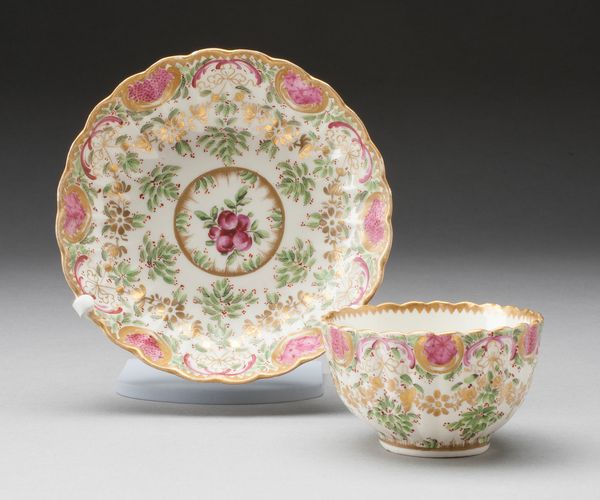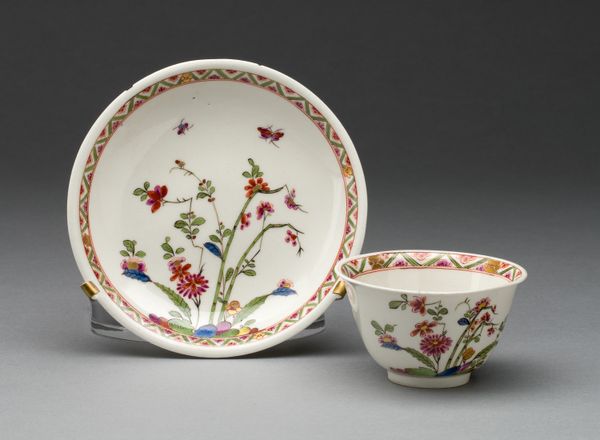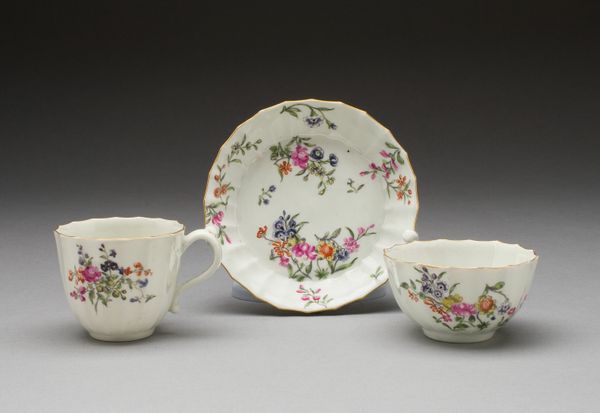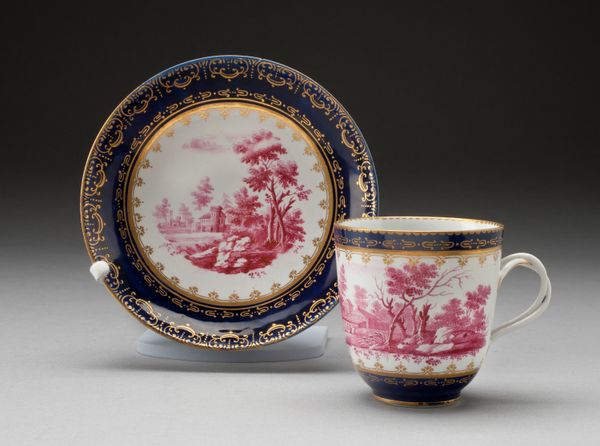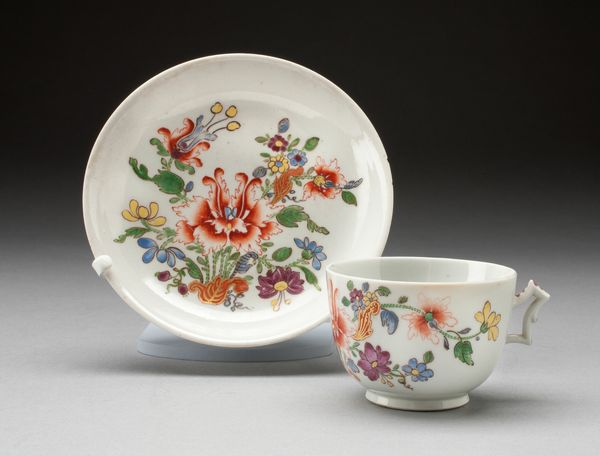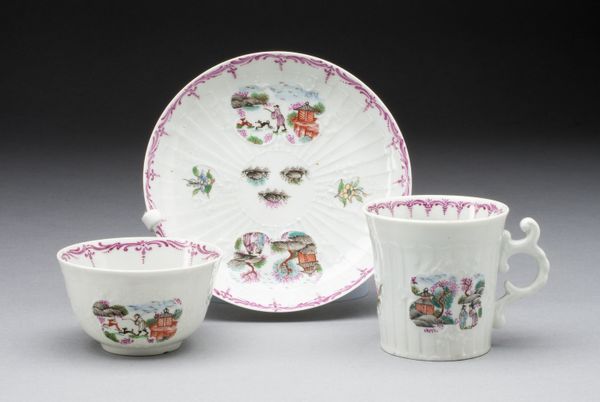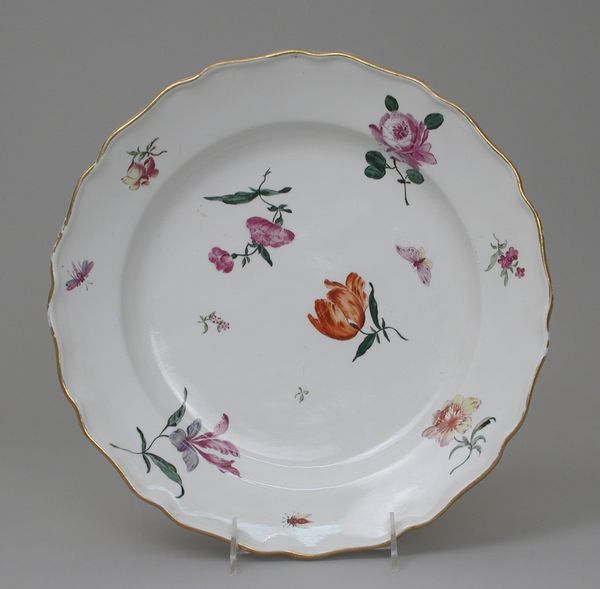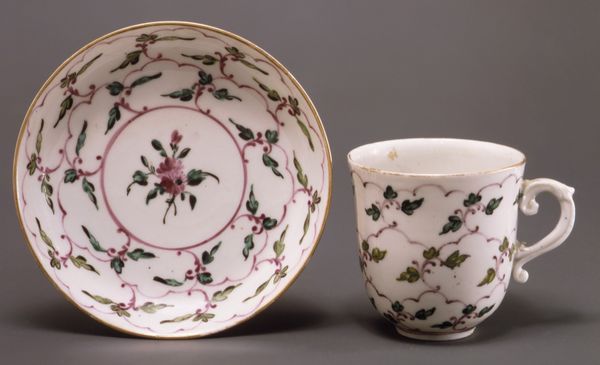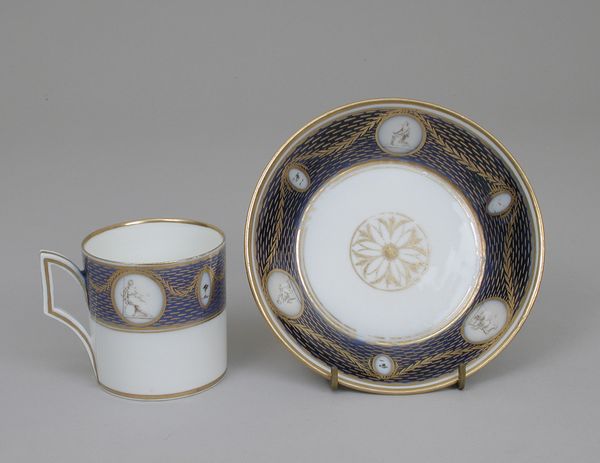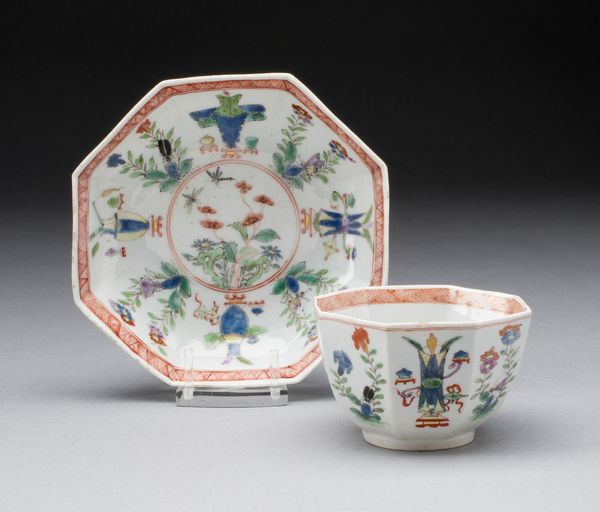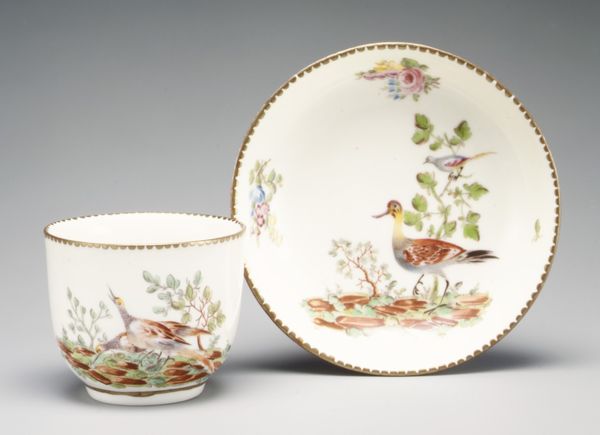
Dimensions: Height: 1 3/4 in. (4.4 cm)
Copyright: Public Domain
Editor: Here we have a dainty porcelain cup and saucer, dating from 1775 to 1785, crafted by the Gardner Manufactory. The delicate floral designs and the Rococo style evoke a sense of aristocratic elegance. What do you make of it, from a historical standpoint? Curator: Well, these aren't simply pretty objects; they're artifacts that tell us about trade, social class, and evolving tastes. Porcelain production was heavily invested in by European elites, wasn't it? Editor: Right! Porcelain was highly prized, a status symbol. The floral motifs speak to that desire for luxury, mirroring the trends in fashionable gardens. Curator: Precisely. The adoption of Rococo, popularized by powerful royal figures like Madame du Pompadour, signifies Russia’s position and alliance. Think of the social rituals these pieces facilitated: tea drinking becoming fashionable amongst upper classes! And the establishment of manufactories… How does this porcelain reflect the institution? Editor: Good point. It reflects patronage, technological ambition and commercial endeavor. The Gardner Manufactory catered to the Imperial court. Are there visual cues for Russian nobility? Curator: Not explicitly. But consider the symbolism and political forces around access to luxury goods like tea. This porcelain also showcases power dynamics across Europe in establishing factories, and the competitive market with Asian imports… The question is, where does Russian-made Gardner manufactory stand amid those contexts? Editor: Fascinating! So much more than just a cup and saucer, but a window into a whole world of socio-economic influences! Curator: Exactly! Examining these objects allows us to connect artistic expression to the wider cultural narratives of the era.
Comments
No comments
Be the first to comment and join the conversation on the ultimate creative platform.
